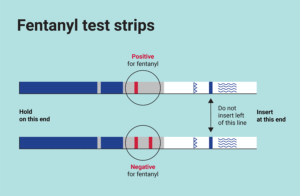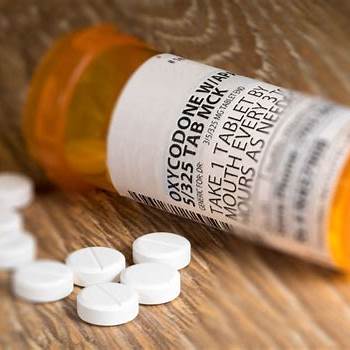Prescription opioids constitute a pharmacological class of analgesics derived from natural opium alkaloids (e.g., morphine) or their semi-synthetic/synthetic analogues (e.g., oxycodone, hydrocodone, fentanyl). These agents are formulated as tablets, capsules, transdermal patches, and increasingly—as illicitly pressed counterfeit pills that are visually indistinguishable from legitimate medication—making them a “heroin in pill form” for many first-time users. The U.S. Centers for Disease Control and Prevention (CDC) estimates that 81,083 people died from an opioid-involved overdose in 2023, a 4 % decrease from 2022 yet still triple the 1999 baseline.
Heroin (diacetyl-morphine) is a type of opioid within the “natural” subclass that is rapidly de-acetylated to morphine after injection, inhalation, or insufflation. Chemically and biologically, heroin acts on the same μ-opioid receptors as prescription opioids; this receptor congruence explains why ~80 % of people who initiate heroin misuse report prior non-medical use of prescription painkillers.
Types of opioids:
- Natural (morphine, codeine)
- Semi-synthetic (oxycodone / OxyContin®, hydrocodone / Vicodin®, heroin)
- Fully synthetic (fentanyl, methadone, tramadol)
Each type varies in potency, lipophilicity, and half-life, parameters quantified in morphine-milligram equivalents (MME)—the standard measurement method used to gauge analgesic efficiency and to cap high-risk dosing (>90 MME/day).
Clinically, prescription opioids can reduce acute postoperative pain by ≥30 % on numerical rating scales; however, meta-analyses show marginal functional benefit and escalating harm when used chronically (>90 days) for non-cancer pain. Efficacy is therefore conditional on short-term, lowest-effective-dose regimens and on concurrent non-opioid modalities (NSAIDs, physical therapy).
“The slight decline in 2023 deaths is encouraging, but we must intensify evidence-based interventions such as medication-assisted treatment and naloxone distribution,” emphasizes Dr. Deb Houry, CDC Chief Medical Officer. reuters.com
Product quality is regulated by the U.S. Pharmacopeia for legitimate pharmaceuticals, yet the current wave of counterfeit pills often contains fentanyl at lethal micro-gram doses, collapsing any margin of safety. Respiratory depression, measurable by drops in oxygen saturation and end-tidal CO₂, remains the proximate cause of fatal overdose.
Instructions to improve prescribing efficiency and patient safety
- Query state Prescription Drug Monitoring Programs (PDMPs) before issuing or renewing opioid prescriptions.
- Limit initial prescriptions for acute pain to ≤50 MME/day for ≤3 days unless clinically justified.
- Co-prescribe intranasal naloxone for any patient exceeding 50 MME/day or with concurrent benzodiazepine use.
- Employ validated risk-stratification tools (e.g., Opioid Risk Tool) and urine toxicology screens.
- Transition appropriate patients to buprenorphine or extended-release naltrexone—evidence-based medications for opioid-use disorder.
How Do We Overcome The Prescription Opioid Epidemic From Here?
Harm-reduction is a public-health framework that minimizes the morbidity and mortality of drug use without demanding abstinence. A 2023 CDC modeling study estimates that universal overdose-education + naloxone programs would cut opioid-fatality rates by ≈10 % within five years.
Naloxone is a short-acting μ-receptor antagonist available as intranasal spray or intramuscular auto-injector whose only clinical purpose is to reverse opioid-induced respiratory depression. SAMHSA notes that scaling naloxone distribution at syringe-service sites lowers overdose deaths by up to 46 % in high-coverage jurisdictions.
Types of harm-reduction services
| Category | Core elements | Primary efficiency metric |
| Overdose-education & naloxone delivery (OEND) | Brief training + take-home kit | Reversal events per 1 000 kits |
| Syringe-services programs (SSPs) | Sterile injection equipment, HIV/HCV testing, linkage to care | HIV incidence, syringe return rate |
| Drug-checking technologies | Fentanyl test strips, portable IR/Raman | Positivity rate & behavior change |
Medication for Opioid Use Disorder (MOUD) comprises FDA-approved pharmacotherapies—methadone (full agonist), buprenorphine (partial agonist), and extended-release naltrexone (antagonist)—that normalize neurocircuitry, curb cravings, and halve overdose risk. A 2021 JAMA meta-analysis found MOUD is associated with a 53 % reduction in all-cause mortality (HR 0.47, 95 % CI 0.42-0.53).
“In the fentanyl era, expanding methadone and buprenorphine access is not optional—it is lifesaving,” stresses Dr. Nora Volkow, Director of NIDA (July 2024 blog).

Quality, purpose & measurement methods
| Therapy | Purpose | Key quality indicators | Optimal retention target |
| Methadone | Full receptor agonism stabilizes physiology | Dose ≥60 mg, take-home flexibility, urine-drug screens | ≥12 months |
| Buprenorphine | Ceilings respiratory depression; office-based | Daily dose 8-24 mg, PDMP queries, adherence check-ins | ≥6 months |
| XR-Naltrexone | Relapse-prevention in highly motivated patients | On-time monthly injection, opioid-free period verified | ≥6 injections |
Implementation instructions to improve efficiency
- Embed OEND kits in every emergency department discharge for opioid-related visits.
- Adopt “naloxone saturation” laws—mandate co-prescribing when ≥50 MME/day or concurrent benzodiazepine.
- Waive prior authorizations for buprenorphine; align formularies to 24 mg ceiling.
- Fund mobile methadone units under the 2024 SAMHSA OTP flexibility rule to reach rural ZIP codes.
Track performance with standardized indicators: naloxone reversals, MOUD retention, overdose mortality per 100 000.
“Treating opioid addiction is never just about eliminating a drug—it’s about restoring a person’s autonomy. When we combine evidence-based medication with psychotherapy and meaningful vocational support, we don’t just reduce relapse rates; we give patients back the futures they thought were already lost.”
— Dr. Michael Olla, Medical Director & Psychiatrist, Valley Spring Recovery Center
